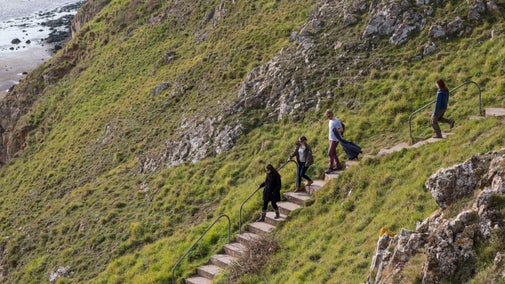Cheddar Gorge trail
Somerset
At almost 400ft (122m) deep and 3 miles (4.8km) long, Cheddar Gorge is England’s largest gorge. Explore one of the country's most spectacular sights along this trail, where you'll discover weathered crags and pinnacles, alongside a wide variety of plants and wildlife that call this landscape home.
Near to
Cheddar GorgeStart point
Cheddar Visitor Information Centre, grid ref: ST 46636 53911Trail information
Safety at Cheddar Gorge
Please do not stand under the cliffs as small rocks may fall at any time. Use only the footpaths signed for the gorge walk at the top and bottom of Cheddar Gorge. It is dangerous to depart from these footpaths.
More near here
Cheddar Gorge
Discover the heights of Somerset's famous Cheddar Gorge

Get in touch
Our partners

We’ve partnered with Cotswold Outdoor to help everyone make the most of their time outdoors in the places we care for.
You might also be interested in
Cotswold Outdoor: our exclusive walking partner
Learn about the National Trust’s ongoing partnership with Cotswold Outdoor. Find out how they help us care for precious places and the exclusive discount available for National Trust supporters.

Staying safe at National Trust places
The special places in National Trust care sometimes come with a few risks for visitors, be it coastline or countryside. Find out how to keep safe throughout your visits.

Follow the Countryside Code
Help to look after National Trust places by observing a few simple guidelines during your visit and following the Countryside Code.

Things to see and do at Cheddar Gorge
Discover the heights of England’s largest gorge. Head out for a walk, take in the views and spot wildlife including Cheddar Gorge’s famous feral goats.

Walking in Somerset
From the majestic crags of Cheddar Gorge and the sea views at Bossington to gentle strolls through Tudor parkland at Montacute House, these are some of the best walks in Somerset.

Walking
Explore some of the finest landscapes in our care on coastal paths, accessible trails, woodland walks and everything in between. Find the best places to walk near you.

